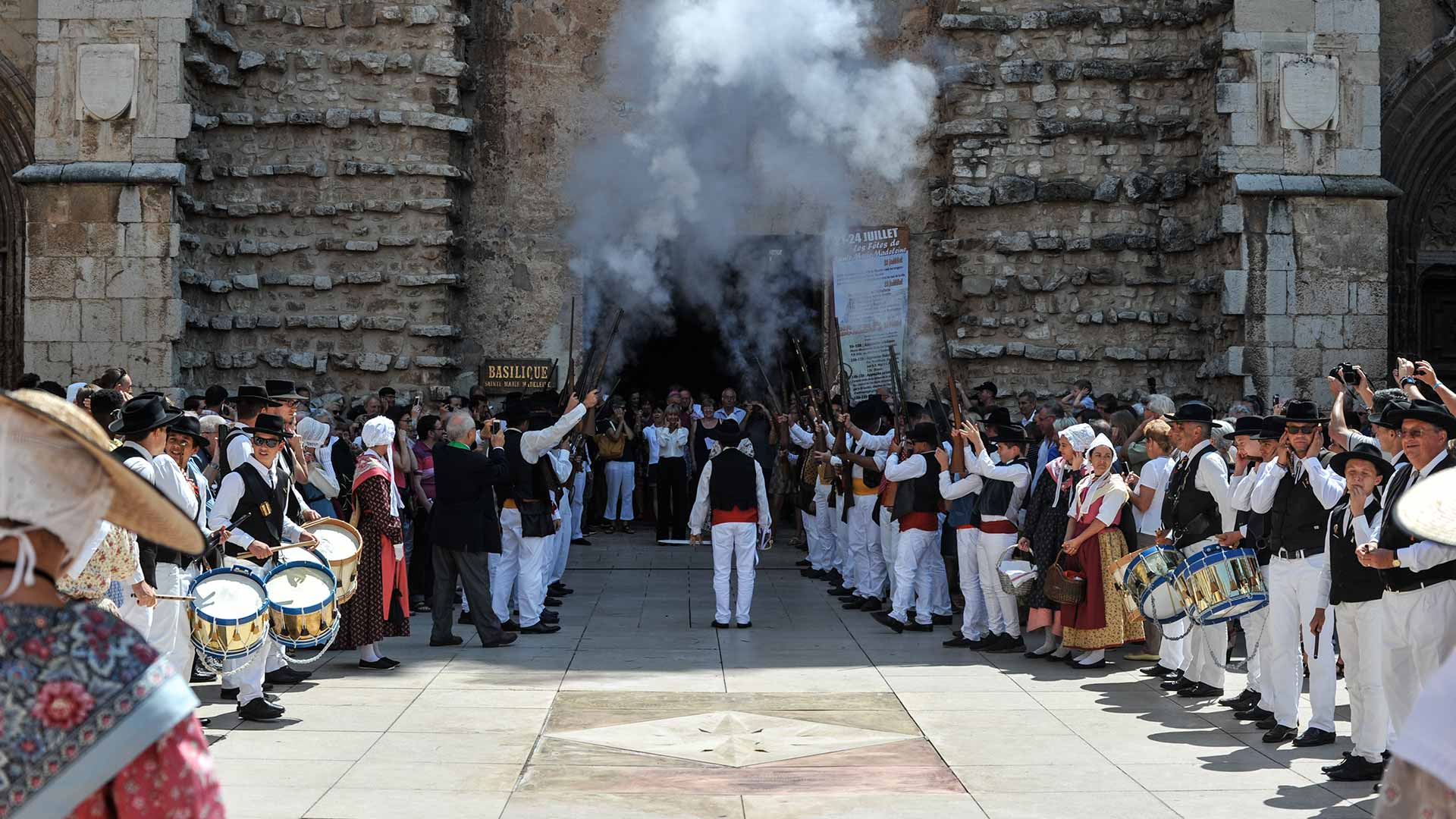
Festival
Every year, in July, Saint Maximin la Sainte Baume celebrates its Patron Saint. The program is varied and allows a wide public to join in the festivities.
In the lavish historical setting of the town of Saint Maximin la Sainte Baume, the patron saint is honoured every year around 22 July. A great festival takes place there lasting several days. On the program: a procession of relics through the town, a torchlight procession, a solemn mass, a popular ball, fireworks and a banquet in the central square. This festive and colourful occasion, accompanied by the sounds of fife and drums, is a beautiful excuse for a getaway in Provence Verte & Verdon. Being part of this celebration means being part of an institution, seeing some of the history of the town and of Provence unfold before your eyes. You’ll see that nothing is left to chance.
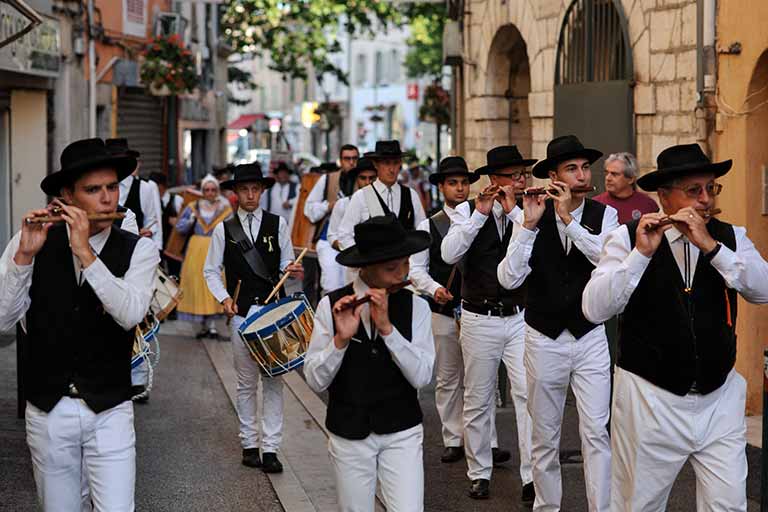
The first magistrate of the city comes out of the town hall with a sword in his hand, raises it above his head, lowers it with a sharp blow, and hostilities are launched to the sound of the “bravadeurs”. Here, you are a bravadeur, bearer or dancer, from generation to generation. The locals dress up in traditional costume and invite you into a round full of good cheer and smiles. So, if you are in the area at the end of July, come and share this great moment with the inhabitants of Saint Maximin, even if only for a day.
WHO WAS MARY MAGDALENE?
Originally from the town of Magdala on the western shore of Lake Tiberias, she was one of Jesus' disciples and followed him until his death. After the resurrection, in the company of her brother Lazarus and her sister Martha she supposedly arrived in Provence to spread the Gospel. She died in a cave in the heart of the Sainte Baume massif.
MARY MAGDALENE HIGHLIGHTS
The crypt
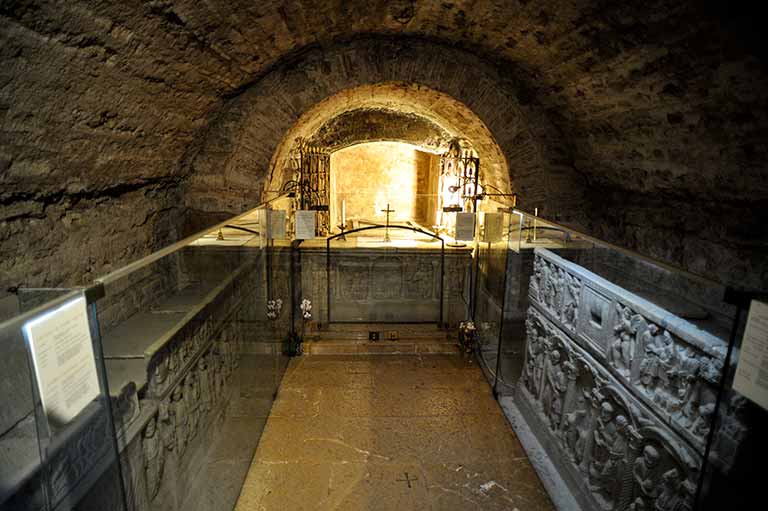
Nestled in the heart of the basilica is a small vaulted room, the crypt. It was an early Christian mausoleum dating back to the 4th century, originally covered with marble and paintings, and was probably the oratory of Saint Maximin. The Oxford manuscript indicates that Mary Magdalene allegedly died there after receiving her last communion from Saint Maximin. The crypt houses the Chief Reliquary of Mary Magdalene.
The vault that crowns the crypt was rebuilt in the 15th century and the present staircase in the 16th century. Until the 16th century, women were forbidden to go into the crypt! It was the outcome of a dramatic event. In 1516, Francis I came on pilgrimage to Saint Maximin after his victory at Marignan. After admiring the relics in the crypt and being very impressed, he decided to have the reliquary brought to the basilica so that the Queen and the Princesses could admire it. It created such a stampede that the reliquary almost ended up on the ground. A precious diamond was lost forever. But access to the crypt is now open to both men and women!
The reliquary
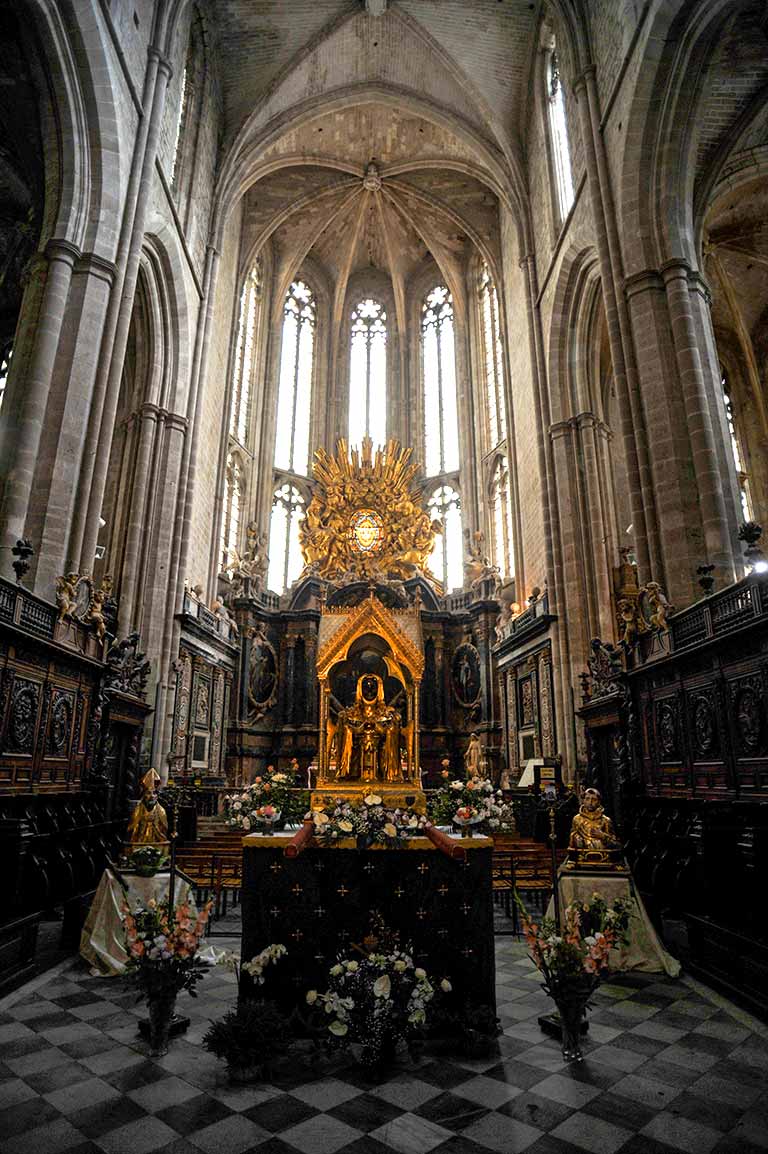
In the crypt of the basilica, protected by an ornate grille, the large reliquary houses Mary Magdalene’s skull. When Charles II of Anjou discovered the remains of the Saint, the lower jaw was missing. Having discovered it in the treasures of the Lateran, Pope Boniface VIII offered it to Charles II to complete his discovery. A magnificent reliquary surmounted by a golden crown and jewels was ordered and executed. During the Revolution, all these objects were looted but the precious bones were recovered and hidden by the sacristan and some Saint Maximinian families.
The present chief reliquary was made of gilt bronze and decorated with enamels in 1860. It was sculpted by Didron following a drawing by the architect Henri Revoil. It is a faithful copy of the old reliquary. Once a year, for the feast of Mary Magdalene, the reliquary is taken out in a procession and presented in the heart of the basilica. In the large reliquary, there is a crystal tube under the skull. It houses the relic of the "Noli me tangere" ("Don't touch me") – a small piece of flesh that once adhered to the skull above the left eyebrow arch. This would be the place where Jesus is believed to have laid his finger on the morning of the resurrection. It is in the crystal tube because it became detached during an inventory in 1780.
The sarcophagi
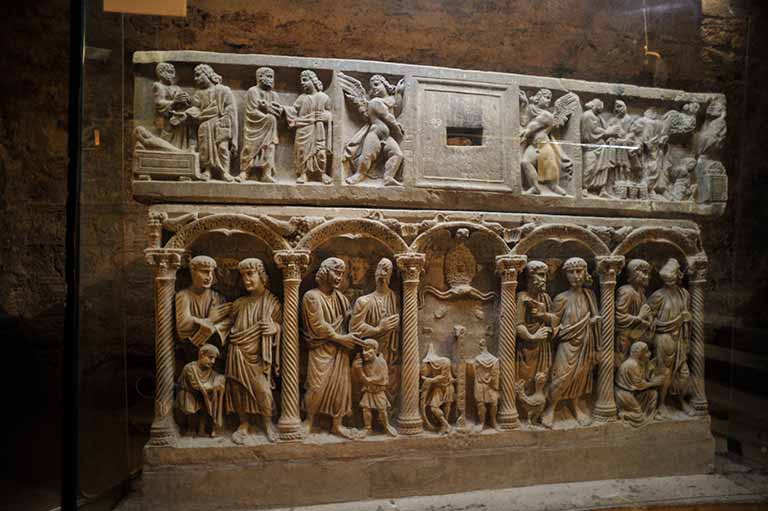
Four sarcophagi are kept in the crypt. These are sculpted in marble. Under the reliquary is the sarcophagus of Mary Magdalene, on the left those of Saint Marseille and the Innocent Saints and finally, on the right, that of Saint Sidoine. Dating from the 4th century, it is probable that several of them were made in Arles, where there were sculpture workshops. The one of Mary Magdalene is of more noble craftsmanship, certainly from the imperial quarries.